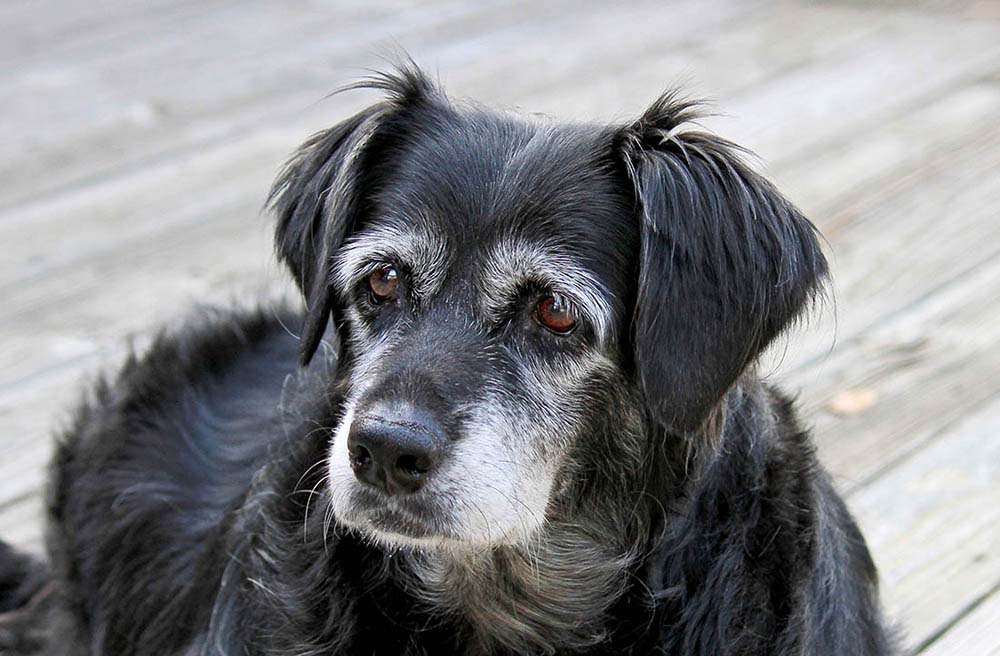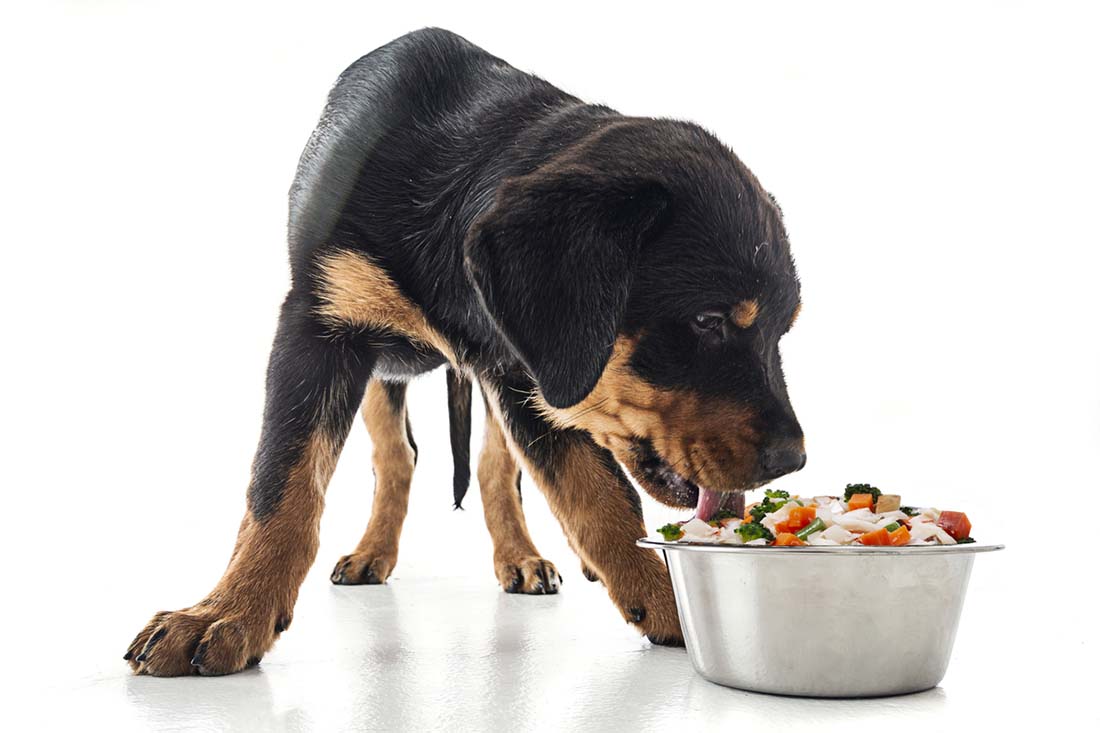Just like all animals, dogs experience various life stages. Their nutritional needs may change depending on these stages and changing body conditions.
It is also true that your dog’s lifestyle will impact his needs, feeding times, and the amount of food he eats. Dog diet requirements for highly athletic or working dogs will be very different than for a much more sedentary dog… even if they are the same breed, age, and size.
We have broken down the typical stages of a dog’s life into four basic categories in order to provide some fundamental guidance. The four dog life stages are:
- puppy
- adult
- senior
- pregnant
Life Cycle 1: Puppyhood

Dogs at the puppy stage of life require socialization, preventative care such as vaccinations, spaying or neutering, and house training. As far as diet goes, puppies require a larger quantity of food and need to eat smaller meals more frequently.
Feeding puppies should be done four times daily until they are four months of age, three times a day until they reach 6 months old, and then twice a day, just as adult dogs.
Puppies mature at different times, depending on their size. Here is a general time frame for when puppies are typically considered mature:
Small breeds and toy breeds 6-12 months
Medium breeds 6-12 months
Larger dogs 10-16 months
Giant breeds up to 24 months
Feeding puppies for maximum growth is not advised. Therefore, free-feeding dogs (leaving a bowl of food out for him to eat at his own discretion) is not recommended.
Steady and consistent growth should be the objective as this builds a foundation for future dog health. Excessive feeding will not lead to a stronger, healthier dog. No matter how much you feed your dog, he will only grow as big as he is predetermined to grow.
Proper nutrition is the foundation for his growth, muscle and skeletal formation, immune system, and brain function.
Adult Dogs
The recommended feeding schedule at the adult stage is twice a day. The predetermined volume of dog food should be divided into two equal portions and fed 8 – 12 hours apart. Adjust the quantity of dog food as needed to sustain a healthy weight.
Adult dogs require enough calories to meet their energy requirements and maintain and repair body tissue. They should be fed pet food based on the dog’s size and activity level. A very active dog that gets regular exercise could consume as much as 20 – 40% more calories than the average “maintenance” dog, even though they may be the same size. An inactive dog may need as much as 10% fewer calories than the average “maintenance” dog.
The Senior Stage

Dogs age at different rates, so not all dog lifespans are created equal. There is no exact time when a dog becomes a ‘senior dog’. Just as with any life stage, each dog needs to be treated individually. Here are some estimates of when dogs become older dogs, based on size:
- Smaller dog breeds (dogs weighing less than 20 pounds)—7 years of age
- Medium dog breeds (dogs weighing 21 to 50 pounds)—7 years
- Larger breeds (dogs weighing 51 to 90 pounds)—6 years
- Giant dog breeds (dogs weighing 91 pounds or more)—5 years
If your best friend has reached his golden years, you have probably noticed physical and behavioral changes, such as a lower activity level and becoming grey around the muzzle. One of the most common problems during senior years is dog weight gain and obesity. Control this by decreasing the caloric intake as needed.
Seniors require a high-quality, highly digestible protein to maintain good muscle mass. There is no nutritional basis for a “senior” dog diet, per se. Some dogs, senior or otherwise, may have specific dietary needs not addressable by our existing daily or vet support meals. For these dogs (and cats), we offer a Custom Meals Service in which we formulate a customized diet by a veterinarian trained in whole-food nutritional formulations.
These custom meals are designed specifically for your dog in partnership with your veterinarian and based on their medical records and lab work.
Pregnant Dogs

Expecting pups require different care. Refer to the feeding guide for pregnant female dogs below.
Dog Gestation Stage
In the first six weeks of pregnancy, a dog does not need any extra nutrition. Just like people, some dogs also experience morning sickness and may avoid eating full meals. If this continues, consult your vet.
After the first six weeks of the dog’s gestation period and every week thereafter until the puppies are born, you should increase her food intake by 25%. She should be fed smaller meals more frequently because the puppies may be constricting her stomach. As always, make fresh, clean water accessible at all times.
Dog Lactation Stage
After giving birth, have your dog eat puppy food while nursing. It is important to feed her a nutrient-dense food with proportionally higher nutrients for the nursing process. This will also aid in recovery from the dog pregnancy.
Feeding guidelines: As in the gestation period, she should be fed smaller portions more frequently — 5-6 times per day is ideal.
As soon as the puppies are weaned, she should transition back to her regular adult dog food and be fed at usual mealtimes as she was before the pregnancy.
A Word on Obesity in Dogs
Obesity during the life cycle of a dog leads to a slew of health issues, yet most pet owners don’t even recognize when their pet is not at an ideal weight. In one study, the Association of Pet Obesity Prevention found that 95% of dog owners of overweight dogs incorrectly identified their pet as a normal weight.
You must avoid overfeeding, monitor daily caloric intake, and get the right amount of food and type of food for your pet’s overall health and wellness. Whether or not you feed your dog fresh food or dry dog food, avoiding or alleviating health problems comes down to dog nutrition.
Speak to a veterinarian or veterinary nutritionist for guidance.
Related reading: 5 Ways to Help Your Dog Lose Weight
This content is for informational use only and does not replace professional nutrition and/or medical advice, diagnosis, or treatment. It is not a substitute for specific nutrition and/or medical recommendations. Please talk with your veterinarian about any questions or concerns.
